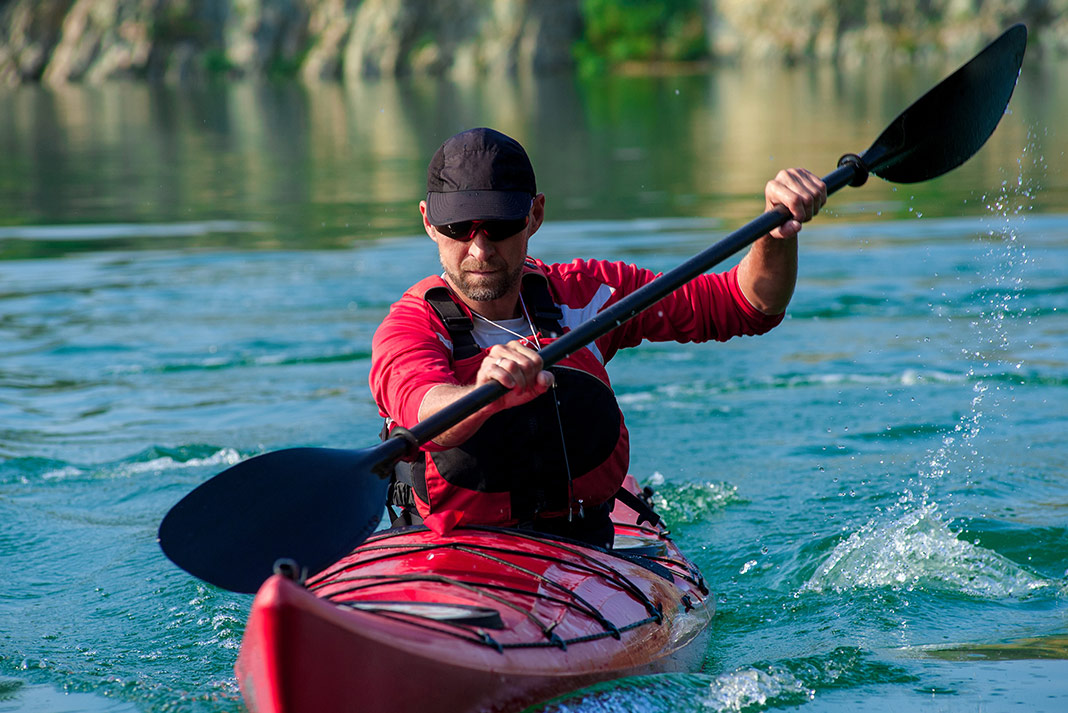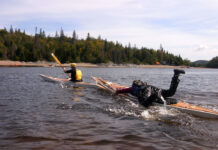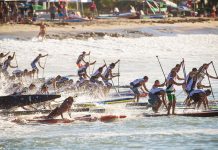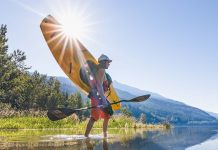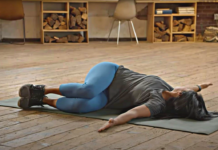Kayaking can easily expose you to injuries ranging from joint stiffness to blunt-force trauma. It’s almost inevitable to experience some type of trauma in your kayaking career. Whether it’s overuse, muscle imbalance, tightness, direct trauma or less than ideal paddling form, every paddler will complain of some level of discomfort at some point.
Off the water, there are three important modalities to train with for optimal performance in your boat and to keep you paddling healthy for years and years—mobility, stability/strength and flexibility. Let’s define these terms and take a look at a few movements specific to kayaking.
Mobility
A state in which one is capable of moving readily from place to place, able to change quickly from one state or condition to another and change levels, all with fluidity and grace.
Mobility can be viewed as the basis for true athleticism—the single attribute that encompasses the body control, coordination and agility that we all strive for.
Mobility training can be used as a warm-up to begin your off-river training session. Here are a few movements I enjoy in my warm-up that emphasize mobility in the torso and shoulders.
Find these exercises for mobility training demonstrated in the video below:
- Lunge with twist – 5 on each side
- Worm crawl – 8 times
- Cat/cow – Alternate for a total of 10 reps
- Torso twist with elbow – 5 on each side
Start with one set and progress to three over a few weeks.
To prevent injuries in a sport as dynamic as kayaking, mobility training is crucial. Whether it’s being able to make multiple moves from one direction to another in a rapid, or landing a big drop and feeling the force of the water crash into your body and pushing you forcefully to the back deck.
We cannot always predict the way our body will respond to powerful currents and whitewater, but with this type of training our body will be able to adapt suddenly to change without significant injury.
To improve your mobility, try Yoga For Kayakers.
Stability/strength
The ability of a joint to properly align itself in order for connective tissue to take on less stress.
If you lack adequate mobility you will compensate by using muscles, tendons and ligaments to take up the slack. Being able to move your body without limitation is important for stability and strength in the joints. Stability and strength in the joints keeps our limbs attached correctly for proper mobility. They go hand in hand.
A total body strength training routine is encouraged for all of your major muscle groups; but just as, if not more important, is training your stabilizer muscles. These are the important stabilizer muscles for paddlers:
Abdominals and lower back
For proper paddling form, taking impact from big hits, powerful boofs and strokes, and much more—kayaking is all about the stabilization of the core.
Read How To Relieve & Prevent Lower Back Pain From Paddling to learn more about this common type of discomfort paddlers experience.
Rotator cuff, internal/external rotation
Your shoulder is only as strong as the stabilizing muscles supporting it. The rotator cuff muscles need some love so they can do their job of holding your shoulder joint in place. Especially for big hits, play boating and accidental, forceful high braces, your rotator cuff plays the largest role in shoulder health. It is important to use light weights for working the rotator cuff muscles, as heavy weights will automatically trigger the deltoids (the large muscle of the shoulder). Think high reps (3X25) and light weights.
Latissimus Dorsi/Serratus Anterior/Rhomboids
Basically the muscles that pull your shoulder blades back and down. With all the paddling we do, we could easily turn into hunchbacks. The importance of working these stabilizing muscles is to put your shoulder and shoulder blades in proper form to minimize muscle imbalance injuries and aid in proper movement of the shoulder.
Find the following exercises for strength/stability demonstrated in the video below:
- Abdominal bracing – 8-10 reps, starting with one set and working toward three
- Plank hold – Start holding for 15 seconds and progress to 60 seconds
- Back extensions – 8-10 reps, starting with one set and working toward three
- Push/pull with cable/band – 10 reps, starting with one set and working toward three
Strength doesn’t mean having a six pack abs or bulging biceps. Ultimate strength means having the ability to move properly and depend on the stabilizing muscles to fire before your larger paddling movements are executed.
Read How To Use Strength Training To Improve Your Kayaking Performance and get started with The Ultimate Training Program For Paddlers.
Flexibility
The length of a muscle. Increased length of muscle improves joint range of motion, leading to better joint mobility and stability.
Flexibility exercises are typically done at the end of your workout, when your muscles are at their warmest and ready to be lengthened. It is important to hold each stretch for at least 30 seconds (but ideally 90 seconds). Any less than 30 seconds and the muscle fibers do not remember the stretch and flexibility does not improve.
You can read our 5 Best Post-Paddle Stretches (+ Foam Rolling Routine) article to learn more. Here are a couple more stretches, demonstrated in the video below:
- Chest opener on the foam roller
- Lat opener on the foam roller
It isn’t until an injury happens or you experience pain in your body, that most people start thinking about off-water training. If we only kayak, we are neglecting certain muscles and creating limitations within our mobility, stability and flexibility. Creating a balanced body by being proactive in our training regimen will boost overall health and increase long-term paddling potential.
Heather Herbeck has a B.Sc. in Exercise Science and is a pro-kayaker, Certified Personal Trainer and Level 1 Crossfit Trainer with over 15 years experience. Check out her website or fitness Facebook page, Fitness and Sport Evolution.


